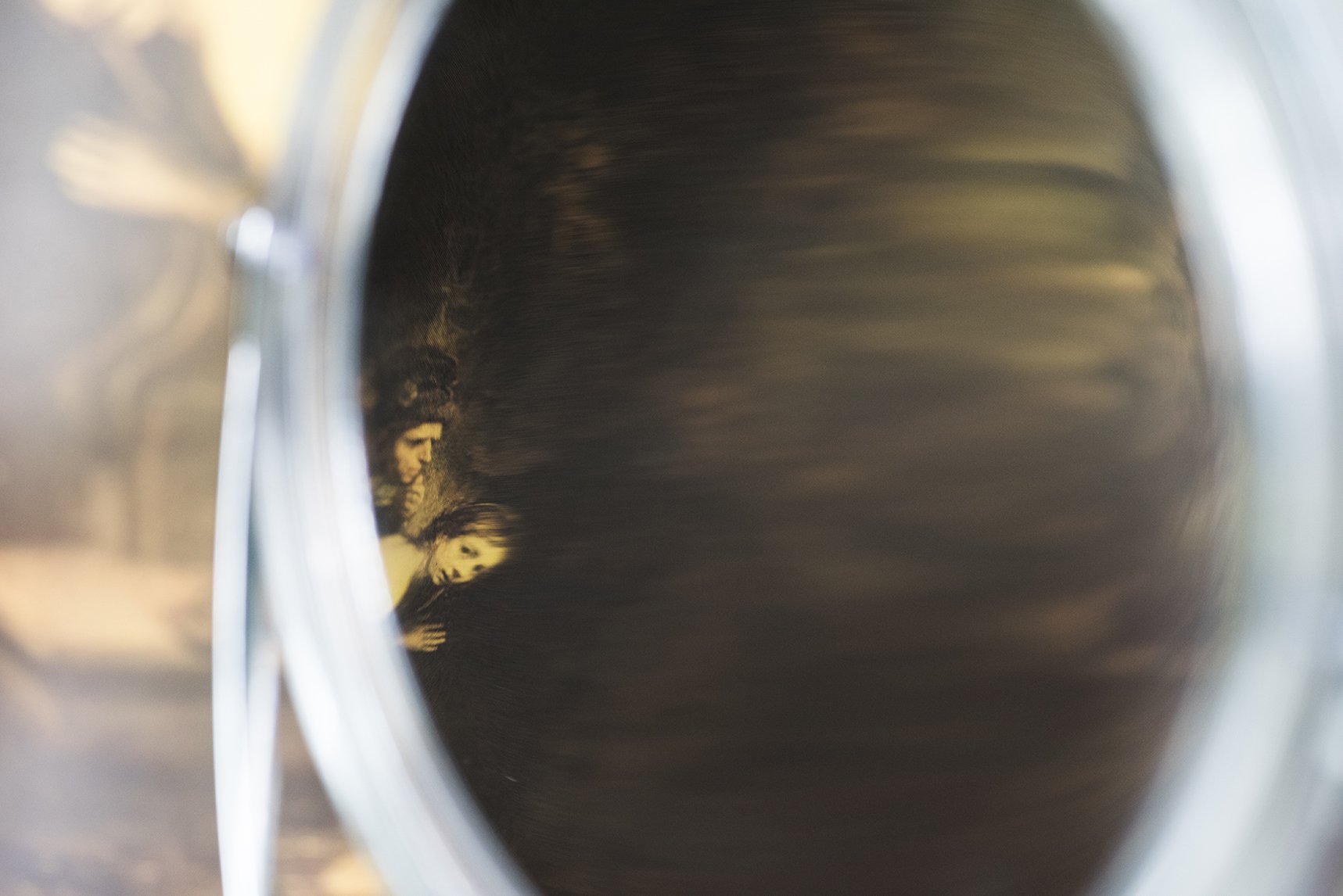The Lost Gaze
The most recent projects of Astrid Jahnsen deal with a process, a type of connecting thread, that is at once visual and conceptual. Jahnsen takes images of photographs from different types of publications. Her enlarged photographs reveal to the viewer the frame of dots that make up the printed images. The often partial closeness, angle and reproduction of the original image decontextualize it and allow one to look at it from a new perspective. That visual aspect of her work functions conceptually as a metaphor: Jahnsen is not only exposing the hidden patterns that give form to the images; by doing so, she gives us a clue as to how to understand, as if with new eyes, how the images were constructed conceptually and the social and cultural pattern that they conceal.
For example, in her project entitled “On Your Knees”, she photographed a series of erotic non published books. The resulting series of images exposed the power and objectification that the male gaze exercised over women. In “Backdrop”, the reproduced photographs belonged to encyclopedias that she read as a child. Very few of the entries and illustrations of those repositories of universal knowledge were dedicated exclusively to women. In fact, the presence of women in those images was usually incidental, like that of a person walking on a Lisbon street in a photograph illustrating an entry about Portugal. Jahnsen rephotographed those images in order to emphasize the role of women appearing in the encyclopedias almost always as casual appearances against the backdrop of the knowledge represented by encyclopedias.
The “Lost Gaze” deals with the same creative principle as the projects mentioned above: in this work, Jahnsen photographed some of the illustrations of a collection of books on great painters inherited from her grandmother. As could be expected, all the artists in the collection were men, and the presence of the women was limited to those that were portrayed by painters. As in the other projects, The “Lost Gaze” reveals the pattern of male dominance but, unlike them, it is full of more subtle nuances about what it means to see and be seen.
At first, the project reflected on the illusion that these paintings produce in the viewer: that these women are the ones looking at us, when actually what we see is also, and perhaps above all, how those artists looked at their models. The absence of women painters in the collection only made this fact more compelling. So Jahnsen tried to photograph women painted from a point of view that could be close to what they may have had about themselves when they posed. As a consequence, several of the images make use of reflections in mirrors or simulate the gaze of the model on some part of her own body.
Jahnsen’s images in this project also reveal, at times disturbingly, glimpses of violence that imply the situation of vulnerability and exposure of the model before the painter. And, as the other side of the coin, it leads us to imagine the embarrassment of posing nude or seminude. But in some of the photographs there is an overwhelming delicacy, especially in those in which it is difficult for us to discover what it is that Jahnsen photographed of the original painting, as if the discovery of the gaze itself over the women were a mystery or we were given a glimpse of a vacuum.
The attempt to recover the “Lost Gaze” of these women is, most probably, a thwarted undertaking. We can never see through the eyes of these women or think what they thought or feel what they felt. But the attempt in itself is eloquent about the possibilities that revealing new perspectives can show us about social and cultural assumptions, as well as the intimate and sentimental assumptions hidden behind the evanescence of a simple gaze.












